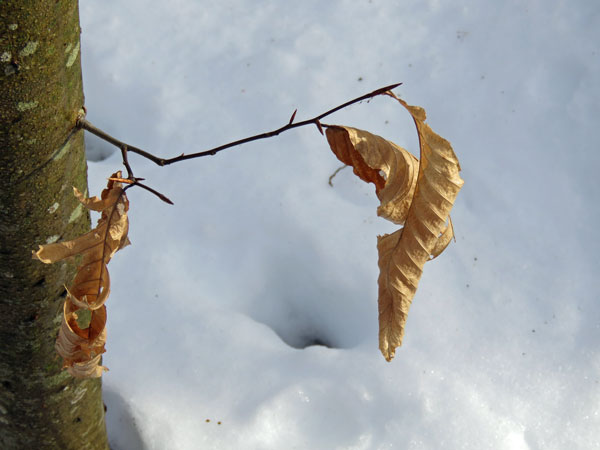
On Christmas Eve morning we headed 13 miles north to find some snow without a sheet of ice on top of it. It was melting up in Ledyard but still looking lovely and was walkable. I was delighted! I was going to get my chance to walk in the snow covered woods!

In the winter there are fewer men in the fields and woods … you see the tracks of those who had preceded you, and so are more reminded of them than in summer.
~ Henry David Thoreau
(Journal, December 12, 1859)

The preserve’s website mentioned wolf trees, which are “relics from the agricultural era when trees along the edges of fields could spread their branches.” My curiosity piqued, I soon spotted one. I’ve seen trees like this before, but didn’t know there was a term for them.




In the strictest sense, wolf trees are those spared the axe during widespread Colonial-era deforestation in order to provide shade for livestock or mark a boundary. As second- and third-growth woods filled in abandoned pasture and farmland, these titans have become crowded by dense, spindly youngsters. Where those upstarts are tall and narrow, competing fiercely for canopy light, the wolf tree they surround has fat, laterally extended boughs and a comparatively squat trunk—a testament to the open, sunny country in which it once prospered.
~ Ethan Shaw
(The Old in the Forest: Wolf Trees of New England & Farther Afield)




When we got to the brook we decided to turn around because there was no bridge and crossing over by stepping on the small rocks looked like a dicey proposition. But on the way back we paid more attention to the little things peeping out from under the snow.




The winter, with its snow and ice, is not an evil to be corrected. It is as it was designed and made to be, for the artist has had leisure to add beauty to use.
~ Henry David Thoreau
(Journal, December 11, 1855)




We will return some day, better prepared to cross the brook and make our way to the cove, where we might find osprey and waterfowl. It was good to get a great walk in before heading home to hunker down for the fast approaching Christmas wind and rain storm.
We wound up having a good Christmas, even though it was pouring rain all day. There were treasured video calls with family. We finished a jigsaw puzzle together while listening to my winter solstice playlist on shuffle. Watched the final episodes of a Norwegian TV series on Netflix, Home for Christmas, dubbed in English. (Hjem til Jul)

As we started to close the drapes at dusk we found ourselves awestruck. The eastern sky, opposite of the sunset, was violet!!! We couldn’t believe our eyes! The color comes from the extra moisture in the atmosphere refracting the setting sun’s light rays so that the violet is reflected.

Color! What a deep and mysterious language, the language of dreams.
~ Paul Gauguin
(Perception & Imaging: Photography as a Way of Seeing)


